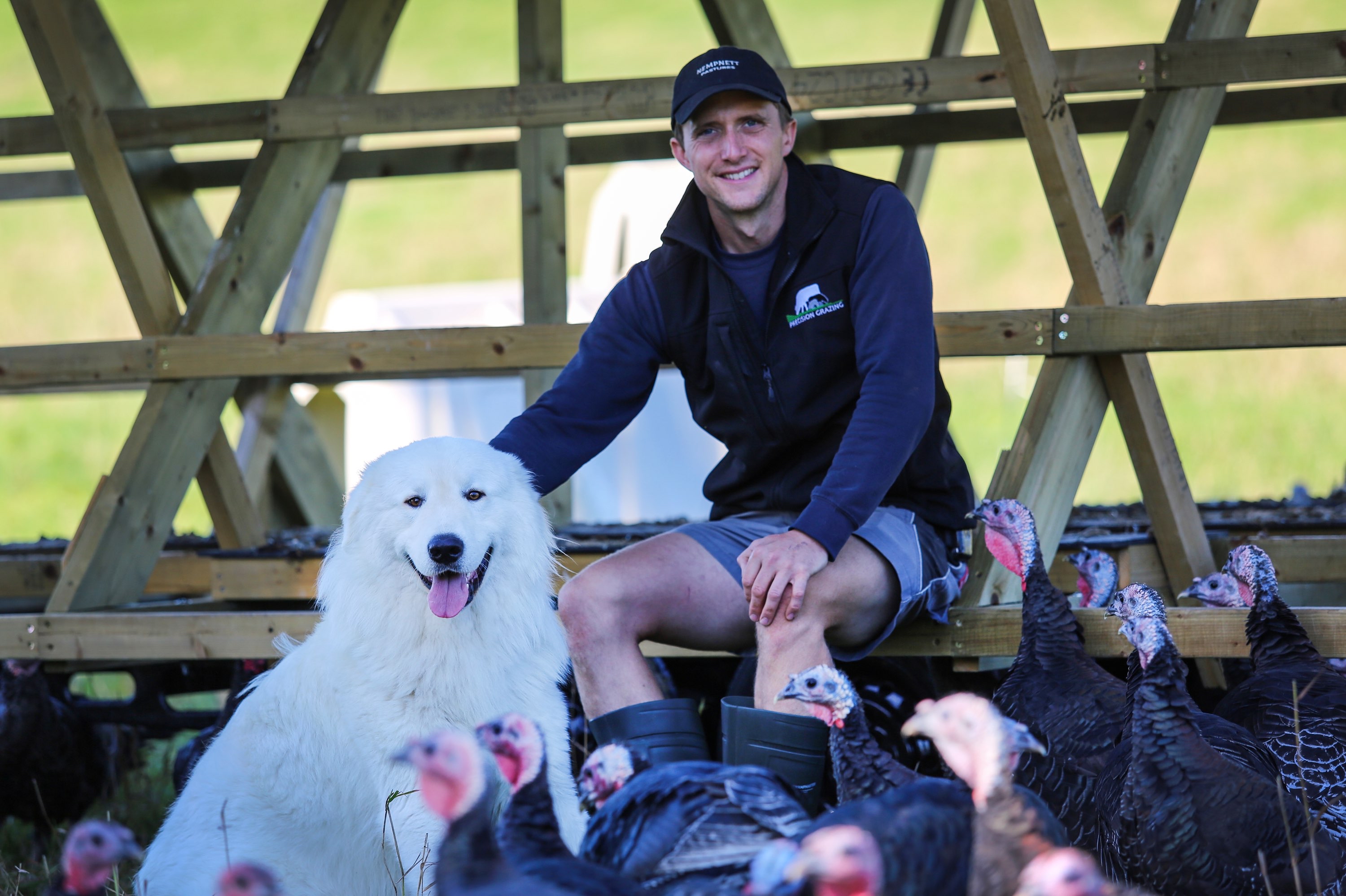Cutting Soya, enhancing Sustainability
- George Ford
- Jul 12, 2024
- 3 min read
Updated: Jul 16, 2024
At Nempnett Pastures, we're passionate about raising happy, healthy poultry – and that includes both our chickens and our turkeys. We believe in doing things the right way, which means not only giving them a fulfilling life on pasture but also ensuring their feed is good for them and the planet. One key ingredient we're working to reduce is Soya, but why?
The Hidden Cost of Soya
Soybeans have become a mainstay in poultry rations for several reasons. First and foremost, they're a complete protein source, packing all the essential amino acids that chickens and turkeys need to thrive. This makes them a highly efficient way to deliver the protein these birds rely on for healthy growth and development. Soybeans are also an attractive option from a cost perspective. Compared to other protein sources like meat or fishmeal, soya is significantly more affordable, a key factor for large-scale poultry producers.
Beyond protein, soybeans offer a valuable energy boost thanks to their fat content, helping birds grow quickly. They also come with a package of essential vitamins and minerals that contribute to overall poultry health. Finally, soy's versatility is a plus. It can be processed into various forms like meal or oil, allowing for easy integration into different poultry feed mixes.
However, the environmental impact of soy production, particularly the deforestation linked to massive soya farms, is raising concerns. Large swathes of rainforest are cleared to make way for soya farms, leading to deforestation, biodiversity loss, and soil erosion. On top of that, soya is often shipped vast distances, adding to its carbon footprint.
The Soya Substitution Challenge
So why not just replace soya with another protein source? Easier said than done! Soya is a powerhouse when it comes to protein content and affordability. Finding a suitable alternative that's both nutritious and cost-effective is a challenge.
Here's a breakdown of some potential alternatives and their current hurdles:
Insect Protein: This holds a lot of promise for the future! Insects could be a more sustainable and protein-rich option. However, the insect farming industry is still in its early stages. Regulations surrounding insect use in animal feed vary widely, and scaling up production to meet demand is a challenge. It also relies on human food waste as a feed source which is it's own issue in it's own right.
Fishmeal: Traditionally used as a protein source, fishmeal raises concerns about overfishing and the sustainability of our oceans.
Other Plant-Based Proteins: While options like peas, beans and sunflower seeds are being explored, they often don't quite match soy's protein content and affordability.
How have we cut soya?
One answer is in the method of production. By only producing our poultry seasonally and moving them to fresh pasture on a regular basis, our birds have access to a constant supply of fresh grass, insects, and other natural goodies.. yes that’s right chickens and turkeys are not and never should be vegetarians! This not only provides them with a diverse and stimulating environment, but also allows them to obtain essential nutrients directly from the pasture. Thus reducing the need for protein-heavy feed supplements like soya, especially during the finishing stages.

The biggest bulk of supplementary food required to feed our birds is for their finisher rations. The finisher ration has a lower protein demand and so is a great ration to make soya cuts on. We've replaced soya with field beans, a homegrown hero! Field beans are a fantastic source of protein that thrives in our local climate. This not only reduces our reliance on imported soya but also creates a more sustainable and localised food system. However the beans are not as high in protein or nutrients as soya and so we don't think we could make this switch if it wasn't for the daily moves to fresh pasture.
"80% of our poultry rations are now sourced from farms within 10 miles of Nempnett Pastures."
Soya in the UK
While soya is a major player globally, growing it in the UK isn't as straightforward. Our climate is generally cooler and wetter than the ideal conditions for soya. While some experimentation with soya varieties suited to the UK is ongoing, it's not yet a mainstream crop here.
The Nempnett Pastures Difference
By saying no to soya (as much as possible!) and embracing the power of diverse pastures, we're raising chickens and turkeys that are not only delicious but also better for the environment. We will continue to work hard to find ways to make our poultry feed more sustainable, but for now we are happy with this progress.




Good to know this , keep up the good work. Reducing soya will also reduce the linoleic acid omega 6 in the chicken: a very good thing to do. Intensively reared chickens have way too much omega 6 in fat and muscle and cause inflammation on consumption.